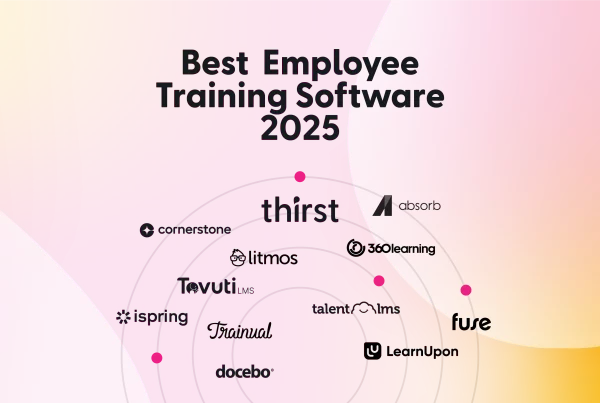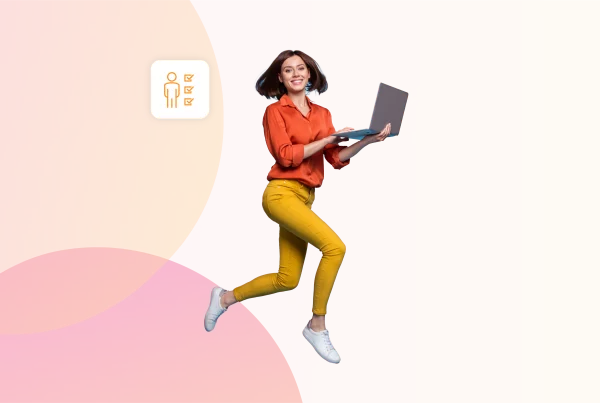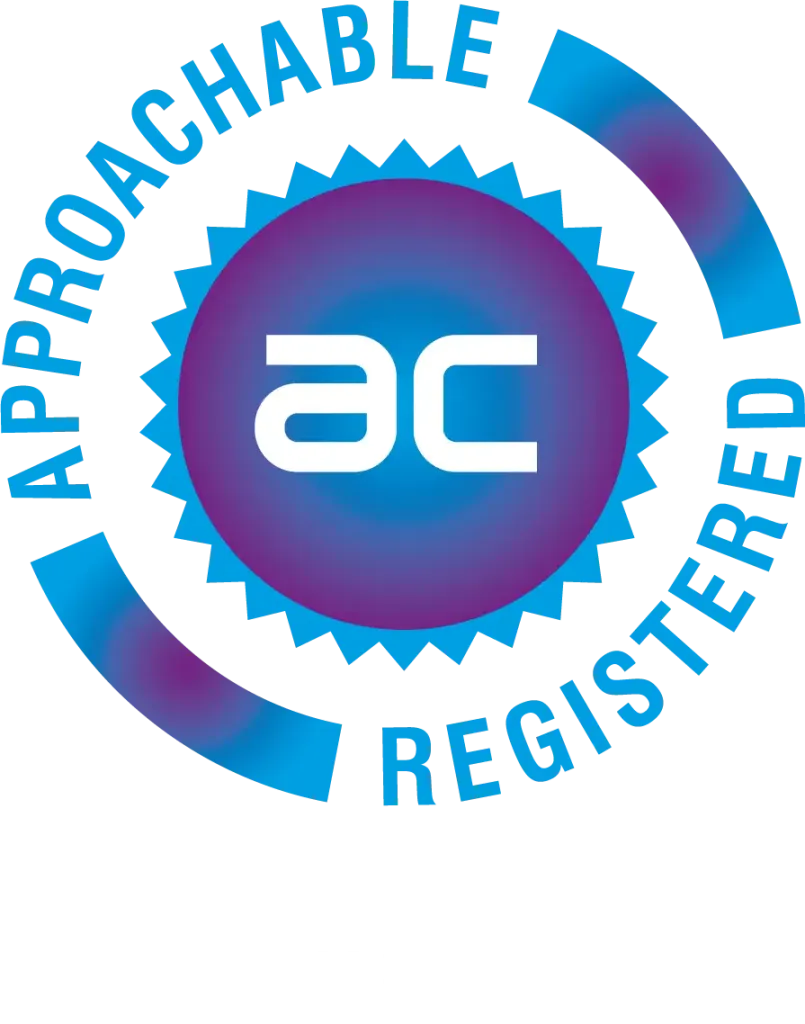Knowledge is power. 🧠
The cornerstone of reputation and influence.
But only if it’s retained. For as long as possible.
If not, knowledge is nothing more than transitory information. And this is of little value to anyone.
Nowhere is this truer than in the workplace.
A successful organisation must employ a team of educated, capable people.
People who listen and have the drive to learn, excel and build on their existing knowledge.
Smart organisations see the potential in their people and know how to help them learn, achieve and grow.
They leverage tools to maximise this process.
Think about it this way…
Every commercial organisation needs a sales pipeline.
They need to consistently identify and attract more clients because this fuels growth. And the first step to achieving this is to possess the knowledge required to make decisions and implement actions.
But it’s more than that.
Without a structure and insight to bolster knowledge retention, you may be able to identify areas for improvement but be unsuccessful in upskilling specific business processes.
You can’t convert prospects into brand advocates if you can’t educate employees in a way that assures they’ll retain the information, right?
That being said, let’s look at how you can optimise knowledge retention in the workplace.
Be sure to read the whole article. You may just find a nugget of gold that will transform your business. 👇
Why is knowledge retention so important?
It has countless benefits. It’s really that simple. The modern working landscape is competitive. Regardless of whether or not you’re in the public or commercial sector.
Now, of course, some sectors are more competitive than others.
But the bottom line is that being able to draw upon a robust infrastructure, one that focuses on acquiring, retaining, and using knowledge, is an elixir that allows organisations to thrive. 👍
Fail to retain knowledge and, at best your organisation will find itself consistently lagging behind competitors who have successfully retained greater knowledge.
At worst, you may just find that your organisation isn’t sustainable in the long run.👎
Let’s have a look at all the reasons why you should place knowledge retention front and centre, regardless of the sector you’re operating in.
✅ Learning improves workplace processes
Optimise your workplace processes, and you’ll improve organisation-wide continuity and consistency across all departments.
Better still, it eases the transition during periods of staff turnover.
Why?
Colleagues can more easily step into a vacated role. This promotes a seamless transition. Save you time and money, whilst promoting the same stellar service.
✅ Problem solving is easier
People with substantive knowledge retained through experience accentuated by an improved learning process, for instance, leveraging learning experience platforms like Thirst offers, are able to solve complex problems with speed and ease. 🙌
✅ Better decision-making
The more knowledge you retain, the more equipped you are to make better decisions.
Organisations are more capable of resolving problems, rectifying past mistakes and, generally operating more efficiently to achieve their goals. 🤔
✅ A culture of innovation
Every organisation needs to innovate to evolve. Fostering a culture of innovation is one of the most valuable attributes any organisation, public or private, should promote.
Why?
Innovation leads to improvements to existing processes and the ability to solve problems creatively.
✅ It makes succession planning easier
Stability is paramount to any organisation. And this includes appropriate forecasting for future transitions.
This ensures that an organisation always has skilled, capable people ready to step in and fill a role, even senior decision-making positions, when needed, mitigating risk and ensuring seamless colleague and customer relationships. 🤝
✅ That competitive advantage
Today’s contemporary market is very competitive. This is true of the public sector, but especially true of the private sector.
Organisations with a competitive advantage are more likely to succeed. Why? They promote efficiency across all operations, adapt quicker to market conditions and ultimately outperform their competitors. 🚀 💸
✅ Efficient use of talent resources
Retaining knowledge can result in resource efficiency. How? It maximises cross-department talent prowess.
This means that only the most qualified people perform roles within the organisation.
Better still, upskilling existing employees so that they’re capable of performing different roles will result in operational fluidity, something that’s especially valuable during staff shortages and recruitment transitions.
What can L&D teams do to improve knowledge retention?
L&D teams play a strong role in ensuring sound knowledge retention in the workplace. This is true of all organisations.
In fact, if L&D teams didn’t spearhead a culture of knowledge retention in the workplace, who would?
Now, there are several ways for L&D teams to lead the knowledge retention initiative. Keep reading below to learn key strategies used to maximise workplace knowledge retention.
✅ Encourage interest and motivation
People who are disinterested and unmotivated aren’t the best learners. This is true for learning to drive, to smoke the perfect hog roast barbecue, to code, and, of course, in the workplace.
Partner learning with a strong, clear motive, such as building skills to achieve a stronger career position, with a deadline to achieve any new skills and qualifications, and people are generally much more receptive to the process. 😲
Don’t forget, too, that the best learners are people interested in learning about the subject.
For instance, HR professionals might be interested in learning how to use AI-integrated candidate onboarding software to help accelerate talent acquisition. Mechanics with a strong interest in fixing combustion engines? Not so much.
✅ Repetition, repetition, and repetition
The key to retaining knowledge is to do a task again and again.
This is true of pretty much anything.
Is it the only way to learn to retain knowledge? No.
Things like teaching with context or practical application or leveraging different teaching methods, such as online learning and mentoring, are also effective. But there’s no denying the impact repetition has on the learning process.
Think about it. You join a new organisation, and on the first day, you’re introduced to the Confluence digital platform.
You’ve not used it before. Or you have, but only have limited experience.
How do you become proficient at navigating the platform?
You use it every day. Over and over again. Eventually, using Confluence becomes second nature.
It’s the same with anything else. Repetition is key. Practice makes perfect after all.
✅ Leverage multiple channels
While we’re on the subject of different teaching methods, one proven way to improve knowledge retention is to leverage multiple channels throughout the learning process. 💡
Different people learn in different ways. Some people respond well to interactive learning, with learners being actively engaged in the process. Others prefer to be left alone, enjoying figuring things out themselves. 🧑🏫🖥️
If you want to improve knowledge retention, be sure to partner the right learning styles with the right type of learner.
✅ Association and real-life situations
Some people learn quicker and retain knowledge better if they can make a connection between what they’re learning and how it reflects real-life situations.
For instance, let’s say you’re a teacher at a primary school. There are two children bickering in the classroom, and it’s becoming disruptive. How do you get the pupils to stop and focus?
Well, having experience of a similar situation previously, an association, if you were, but if you want to improve knowledge retention, highlighting, or in this scenario, reiterating why they need to focus on you, is typically an effective way to quash the tension and get them to focus on the lesson.
The 10 best ways to improve knowledge retention
The average learner forgets 70% of what they learned within 24 hours and a jaw-dropping 90% within a week. 😱
Of course, this is an average and not indicative of everyone. However, what’s clear is that people can benefit from learning how to improve knowledge retention in the workplace.
Knowing this, if you want to maximise the potential of people in the workplace, you’ll need to know and implement one or more of the strategies we’ve listed below in no particular order.
1. Microlearning ✅
Breaking learning into small, bite-sized chunks, otherwise known as microlearning, has proven to be an effective means of retaining knowledge, regardless of the situation.
These days, people’s attention spans are dwindling. This is especially true of millennials and Generation Z.
Organisations that employ microlearning L&D, both online and in person, help to keep learners more engrossed in the learning process.
2. Make it interactive ✅
Sure, people learn in different ways, but making learning interactive is generally considered to be one of the most effective and successful ways of learning.
Now, there are several ways that L&D teams can leverage interactive content. These could create a narrative that learners can relate to. Using interactive content to influence audiences.
Video, audio, and animation. Quizzes. Surveys. Adding creativity, personality, and fun to the learning process. Make the L&D experience interactive, and there’s a good chance that learners will remember it. 💭🙌
3. Focus on real-world applications ✅
The human brain is hardwired to retain information when it’s directly relevant to their objectives or environment.
Think about a sportsman, a junior football player.
They’re learning to take a free kick that swerves around a three-man wall and smacks the net in the top corner of the goal. There’s a technique involved. Skill. Practice.
Theory will only get you so far. Practice makes perfect.
Turn people, especially thought leaders, into active participants, applying concepts into practice, and you’ll bolster the learning process.
A great way to do this is to run simulations. These are a great way to demonstrate how your learning objectives apply to real-world situations. They help people experience the benefits or consequences of practising skills before applying them in the real world.
4. Encourage collaboration ✅
Collaboration improves employee engagement, productivity, and satisfaction.
This results in a better standard of work, innovative and creative solutions, and ultimately, more successful projects. Additionally, collaboration fosters communication.
This negates the potential for project errors and setbacks, which cost organisations valuable resources like time and money. ⏱️💰
Then there’s flexibility.
This attribute is paramount to ongoing success. You only need to look at the long list of organisations that failed to meet their potential because their product or service offerings were too rigid. MySpace. Blackberry. Kodak.
Flexible businesses evolve. Succeed. Rigid businesses flounder and can ultimately fail.
But there’s more.
Encourage collaboration, and you’ll unlock your learning potential. Teams that collaborate with each other also learn from each other and themselves. This strengthens relationships.
5. Use learning platforms ✅
L&D is only as successful as how it’s delivered.
You could have a dedication to learning. The best intentions. Even a clear roadmap and goals.
But if you don’t deliver L&D in a way that will resonate with learners, you’ll struggle to maximise its impact.
Remember, not everyone learns in the same way.
Some are visual learners. Others prefer to learn by doing. Yet more need an interactive element.
Tailor L&D to learners and you’ll stand a good chance of improving knowledge retention in the workplace, or any environment for that matter. And using learning platforms, is a great way to improve knowledge retention, regardless of how people learn.
6. Gamify the learning process ✅
Gamification has yielded promising results, having a positive effect on learners and their employees alike. This shouldn’t be a surprise. Especially when you consider that the evolution of technology and our understanding of learning have evolved over the last few decades.
In fact, in many cases, gamification has revolutionised traditional training methods. And it works. 🎲 🎮🎱
Why?
Humans are competitive.
Some rather than others. But on the whole, we’re an ambitious species.
We focused on achieving our goals. Tap into this inherent trait, and you can leverage a powerful motivator while improving overall knowledge retention.
Quizzes, prizes, programs, and leaderboards, all backed by clear incentives, will boost knowledge retention.
Don’t also forget that gamification is fun! Well, more fun than being lectured to and then asked to pass questions and exercises to prove that knowledge has been retained!
The result?
More engagement throughout the L&D process, rapid skill acquisition, and a memorable experience. This bolsters the learning process and the success of knowledge retention.
7. Integrate knowledge into the flow of work ✅
Integrate knowledge into the flow of work, and you’ll improve knowledge retention. Why? When working, people are engaged. They concentrate. Their minds are focused on completing tasks. This makes them more receptive. Capable of acquiring new skills. 📙
Implementing learning in the flow of work enables people to apply what they’ve learned. It allows people to experience the impact of their newly acquired knowledge in their day-to-day working lives. It accentuates L&D. Even something as straightforward as acquiring the knowledge to use a new digital platform.
Think about it this way…
Imagine you’re a nursing associate or trainee. You’ve been to university. Got your degree. Registered with the Nursing and Midwifery Council (NMC). You’ve spent some time onwards, learning how to look after patients in a healthcare setting. You’re excited about starting your first real nursing job. The more time you’ve spent in actual clinical settings prior to becoming fully qualified, the better equipped you’ll be when you finally start your nursing career, right? 👨⚕️
Integrate knowledge into the flow of work and your education will grow as your experience and skillset does.
8. Encourage spaced retention ✅
People aren’t robots or computer programs. They cannot be “programmed” to complete a task once, and they automatically retain the information forever.
To retain knowledge, learners should be provided with the ability to revisit essential information again at a later, reasonable date. Not the next day, and not a year later.
The time between lessons helps learners process the information they’ve acquired. This helps learners process newly learned information.
Don’t do this, and you’ll run the risk of piling new information on top of existing information. Not allowing learners to build a strong knowledge foundation. The result? Poor knowledge retention.
9. Personalised learning journeys ✅
If you want to improve knowledge retention in the workplace, or any environment for that matter, personalised learning journeys are a great way to do it. Do this, and you’ll be able to maximise engagement, improve learner experiences, improve learner outcomes, and optimise the whole learning experience from start to finish.
Easily identify how to provide learners with just what they need to maximise knowledge retention. Set personalised objectives throughout the learning process. Monitor and track individual learners’ experiences. Leverage dynamic learning by focusing on learner interests, career aspirations, and proficiency.
10. Create a culture of continuous learning ✅
An organisation and its employees benefit from a culture of continuous learning.
How?
Not only do employees become more capable and confident, but the organisation also benefits from having consistently high-performing people in all roles. People feel that you’ve invested in them. This improves performance.
Don’t forget that innovation is much easier with knowledgeable, capable people. Continuous learning creates a culture of achievement. One that improves morale.
And increased morale means employees are less likely to leave, therefore reducing staff turnover and the financial and operational challenges that go along with this. 🎓
Remember too that it’s costly to continually recruit and train new employees. But if employees stay longer, organisations will be able to manage such circumstances with finesse.
Create a culture of continuous learning, one that focuses on tailored knowledge retention, and you’ll reap a full range of benefits across the whole business. 📈
Which strategy will help your organisation improve knowledge retention?
Microlearning. Real-world application. Leveraging learning platforms.
Understanding which strategy will help your organisation improve knowledge retention isn’t as straightforward as you may first think.
It involves understanding which type of learning style is best suited to your organisation. What are your goals? Your L&D infrastructure. What resources do you have? And more.
Organisations can often employ a range of strategies to guarantee that knowledge is retained. Especially if that knowledge is vital to ongoing prosperity. Formal or self-directed learning. Collaboration. Workflow integration. There’s no one-size-fits-all solution for every organisation.
Assess your needs. Review resources. Consider organisational goals. Partner theoretical and practical learning and make it fun!
Personalise the learning experience according to your professional needs and ambitions.
Focus L&D on what you need to do to engage learners and maximise knowledge retention. 🔥
Supercharge your operations with knowledge retention
- We forget 50% of what we learn in an hour.
- 70% of what we learn in 24 hours.
- 90% of what we learn in 7 days.
Any organisation that focuses on knowledge retention will put itself in a stronger position than organisations that don’t.
Find out how to improve knowledge retention, and you’ll supercharge your operations.
Imagine having the knowledge, structure, confidence, and prowess to know anyone in the organisation can step up to the plate whenever needed and hit a home run! ⚾️
That’s the benefit of investing in knowledge retention in the workplace.
Thirst will improve your organisation’s knowledge retention
The Thirst AI-powered learning platform empowers L&D professionals to accelerate their learning culture, talent acquisition, leadership development, and internal mobility. It’s your chance to close your skills gap—fast. 🙂
Are you interested in learning more? Book a demo today. 👍
For more e-learning insights, resources and information, discover the Thirst blog.
You may also enjoy:
11 Strategies to Improve Your LMS Engagement | 10 Ways to Overcome the Forgetting Curve | The Ultimate Guide to Sharing Best Practices







